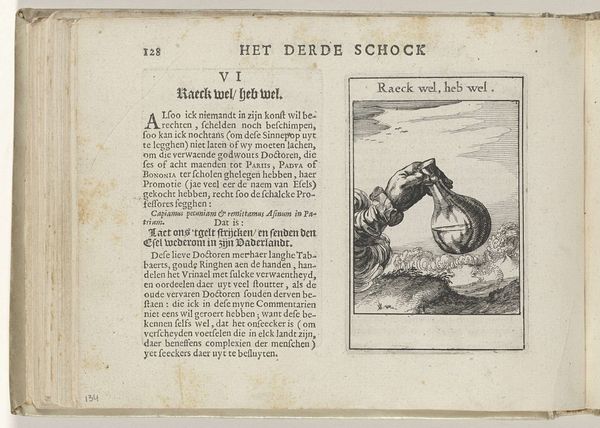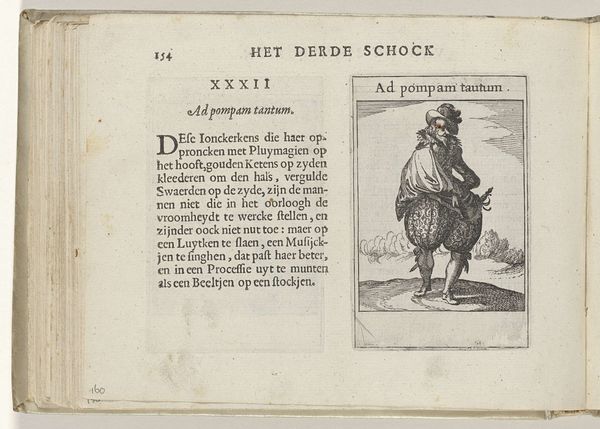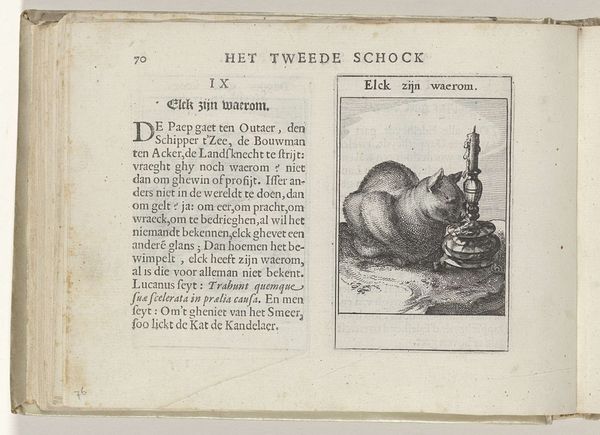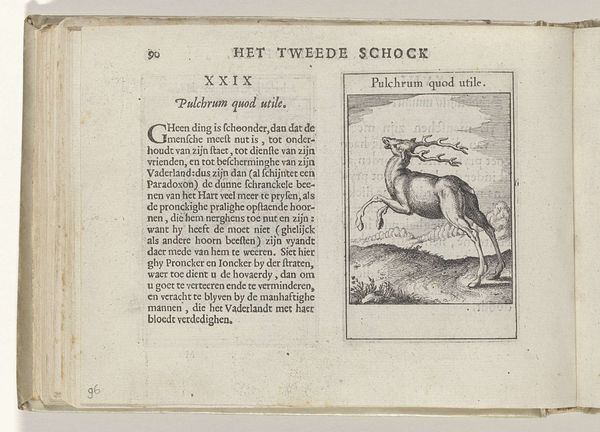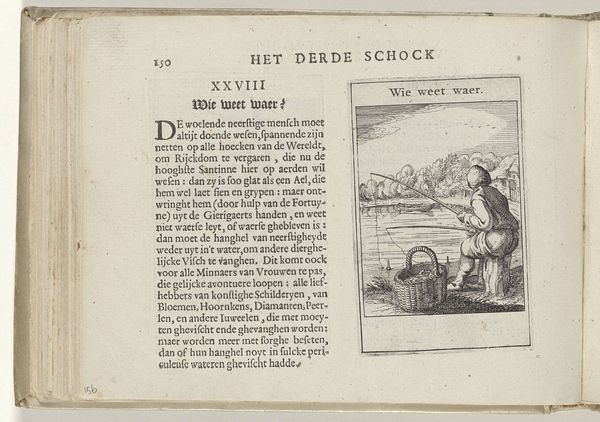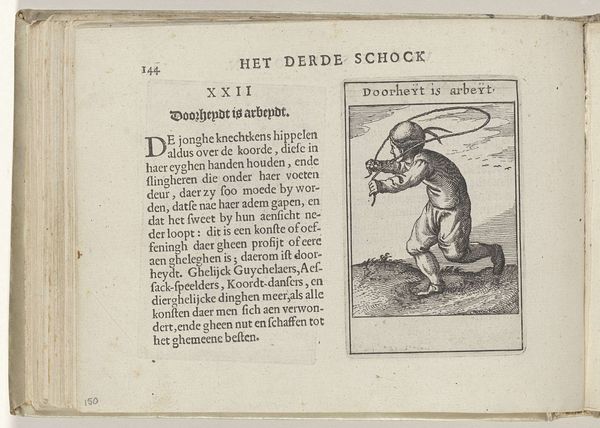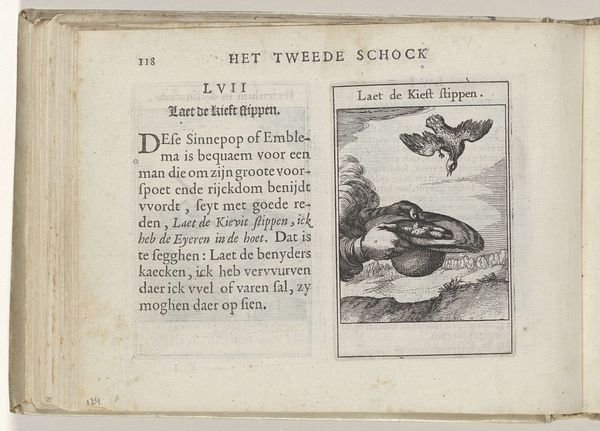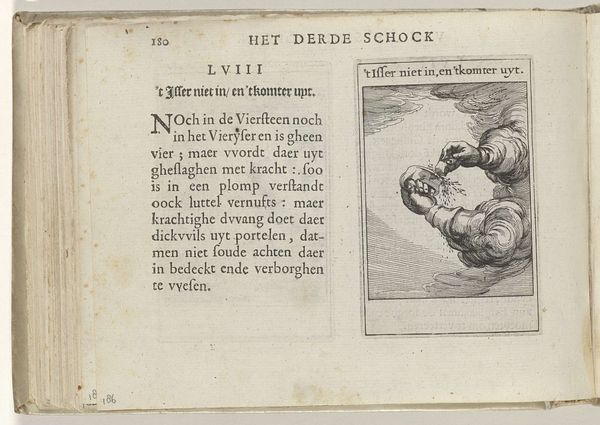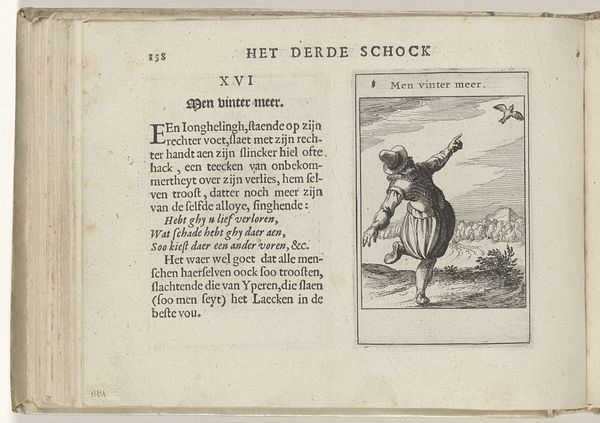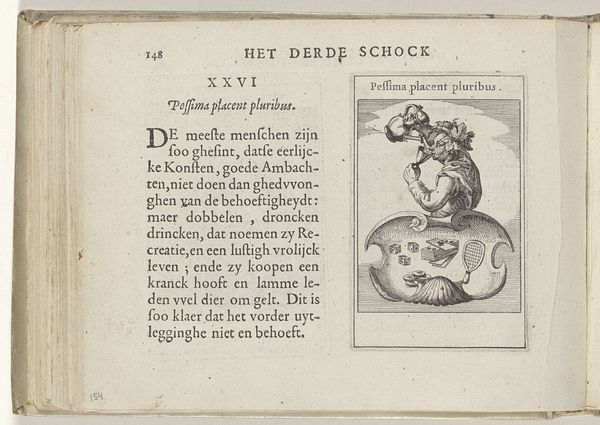
print, engraving
#
narrative-art
#
dutch-golden-age
# print
#
figuration
#
line
#
engraving
Dimensions: height 137 mm, width 188 mm, height 95 mm, width 60 mm
Copyright: Rijks Museum: Open Domain
This engraving by Roemer Visscher, dating back to around 1614-1620, depicts a man struggling in water, clinging to two egg-shaped floats for support. The title, "Quaet toeverlaet," translates to "bad reliance," encapsulating the image's cautionary message. The egg-shaped floats symbolize fragility and false hope. This symbol echoes through time, reminiscent of the broken egg in Hieronymus Bosch's allegorical works, signifying folly and the ephemeral nature of existence. Here, the precariousness of the man's situation—depending on these unstable objects—speaks to the human condition, our reliance on flawed supports. The image taps into a deep well of collective memory. The viewer is drawn into the emotional turmoil of the scene, a subtle reminder of our own vulnerabilities and the often misguided paths we tread in search of security. The 'bad reliance' becomes a mirror, reflecting our inherent susceptibility to error. The image carries a powerful warning, an echo from the past that resonates with our present-day anxieties and hopes, perpetually reminding us of the cyclical nature of human folly and the search for stable ground.
Comments
No comments
Be the first to comment and join the conversation on the ultimate creative platform.


